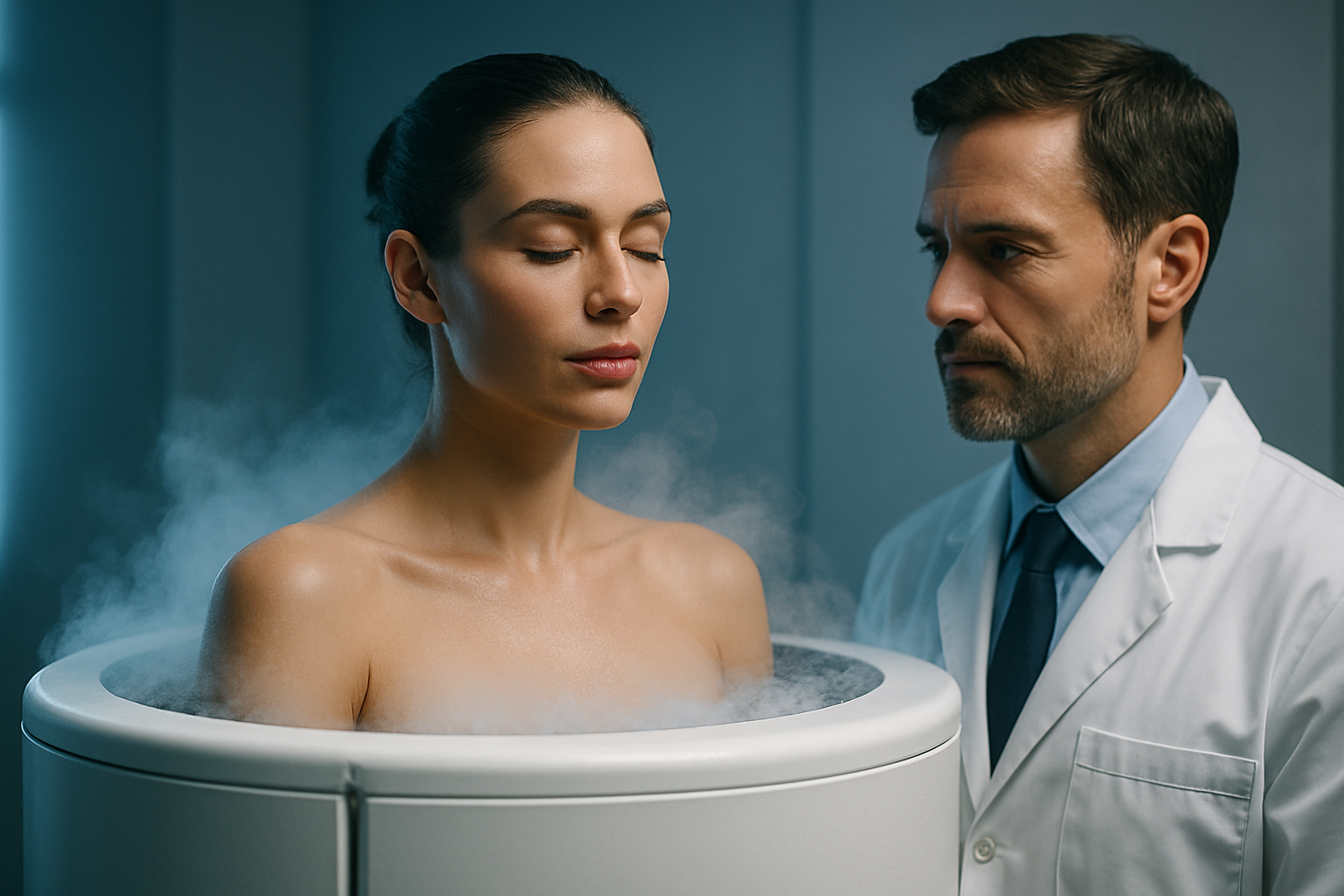Cryotherapy: The Cold Truth About Beauty's Coolest Trend
Imagine stepping into a chamber so cold that it makes the Arctic seem tropical. Your skin tingles, your breath catches, and for a brief moment, you wonder if you've made a terrible mistake. But as you emerge just minutes later, you feel invigorated, refreshed, and maybe even a little younger. This is the world of cryotherapy, a cutting-edge treatment that's rapidly gaining traction in the beauty and wellness industry. Far from being just another fleeting fad, cryotherapy is rooted in centuries of cold therapy practices and is now backed by modern science. As more celebrities and athletes sing its praises, cryotherapy is poised to become the next big thing in our never-ending quest for health, beauty, and peak performance.

However, it wasn’t until the 1970s that modern whole-body cryotherapy was developed in Japan by Dr. Toshima Yamauchi. He initially used it to treat rheumatoid arthritis, but soon discovered its potential for a wide range of applications. From there, cryotherapy spread to Europe in the 1980s and eventually made its way to the United States in the 2000s.
The Science of Shivering: How Cryotherapy Works
Whole-body cryotherapy involves exposing the body to extremely cold temperatures, typically between -110°C to -140°C (-166°F to -220°F), for a short period, usually two to three minutes. The body’s exposure to this extreme cold triggers several physiological responses:
-
Vasoconstriction: Blood vessels constrict, redirecting blood flow to vital organs.
-
Endorphin release: The body releases endorphins, natural pain-relieving and mood-elevating hormones.
-
Anti-inflammatory response: Cold exposure reduces inflammation throughout the body.
-
Metabolic boost: The body burns calories to warm itself up after treatment.
These responses are believed to contribute to various health and beauty benefits, including reduced inflammation, improved skin tone, accelerated muscle recovery, and enhanced mood.
Beauty in the Blast: Cryotherapy’s Cosmetic Applications
While initially used primarily for pain management and athletic recovery, cryotherapy has found a niche in the beauty industry. Proponents claim it can:
-
Tighten skin and reduce the appearance of cellulite
-
Boost collagen production for a more youthful appearance
-
Improve skin conditions like eczema and psoriasis
-
Enhance circulation for a healthier glow
-
Accelerate hair growth and improve scalp health
Localized cryotherapy treatments, which target specific areas of the body, are becoming increasingly popular in spas and dermatology clinics. These treatments often use controlled streams of liquid nitrogen to achieve similar effects to whole-body cryotherapy, but with more precision.
From Athletes to Aesthetes: The Expanding Cryotherapy Market
The global cryotherapy market is experiencing rapid growth, with some estimates projecting it to reach $5.6 billion by 2024. This growth is driven by several factors:
-
Increasing adoption by professional athletes and sports teams
-
Growing awareness of cryotherapy’s potential health benefits
-
Expansion of cryotherapy centers and spas offering treatments
-
Development of at-home cryotherapy devices
Celebrities like Jennifer Aniston, Daniel Craig, and LeBron James have publicly endorsed cryotherapy, further fueling its popularity. As the market expands, we’re seeing innovations like cryotherapy facials, cryosaunas, and even cryotherapy-infused skincare products.
Chilling Concerns: Safety and Efficacy Debates
Despite its growing popularity, cryotherapy is not without controversy. The FDA has not cleared or approved whole-body cryotherapy devices for medical treatment of any specific medical conditions. Some health experts warn that the long-term effects of repeated exposure to extreme cold are not yet fully understood.
Safety concerns have also been raised, particularly after a cryotherapy-related death in 2015. Proper supervision and adherence to safety guidelines are crucial. Individuals with certain health conditions, such as high blood pressure, heart disease, or pregnancy, are advised to avoid cryotherapy.
Moreover, while anecdotal evidence abounds, scientific research on cryotherapy’s efficacy for many of its purported benefits is still limited. Some studies have shown promising results for pain relief and muscle recovery, but more research is needed to conclusively prove its effectiveness for beauty and anti-aging applications.
The Future of Freeze: What’s Next for Cryotherapy?
As cryotherapy continues to gain momentum, we can expect to see further innovations and applications in the beauty and wellness space:
-
More personalized treatments: Advanced technology may allow for customized cryotherapy sessions based on individual needs and body composition.
-
Integration with other therapies: Combining cryotherapy with other treatments like light therapy or traditional spa services could enhance overall effects.
-
Improved at-home options: As technology advances, more affordable and user-friendly at-home cryotherapy devices may become available.
-
Expanded beauty applications: We may see cryotherapy incorporated into more beauty treatments, from hair care to nail treatments.
-
Greater regulation and standardization: As the industry grows, expect increased oversight and standardization of practices to ensure safety and efficacy.
While the jury is still out on some of cryotherapy’s loftier claims, its growing popularity suggests it’s more than just a passing fad. As research continues and technology improves, cryotherapy may well become a staple in our beauty and wellness routines. For now, those brave enough to endure the big chill may find themselves on the cutting edge of beauty’s coolest trend.





